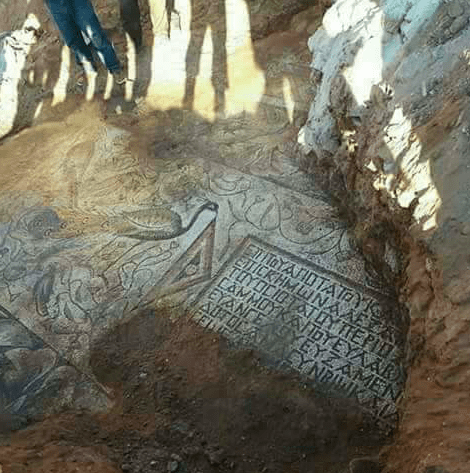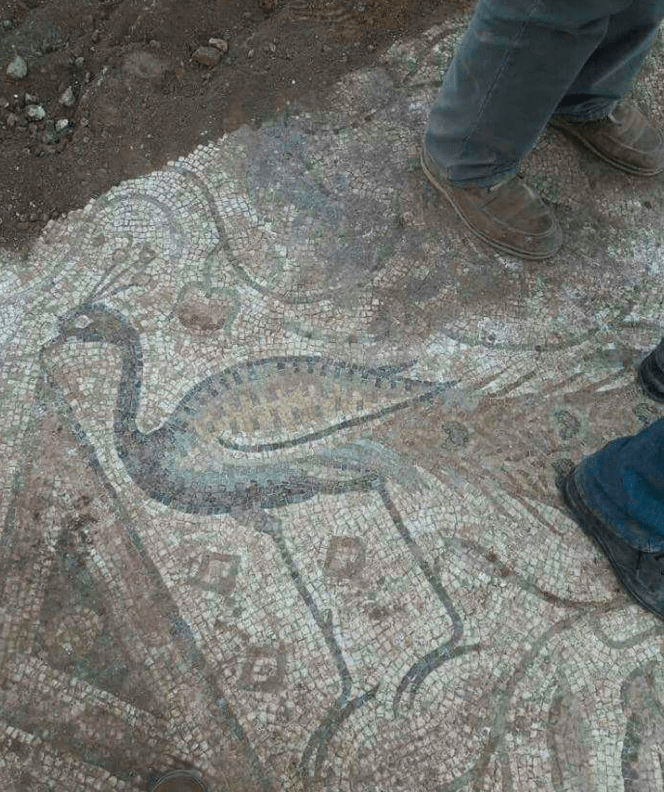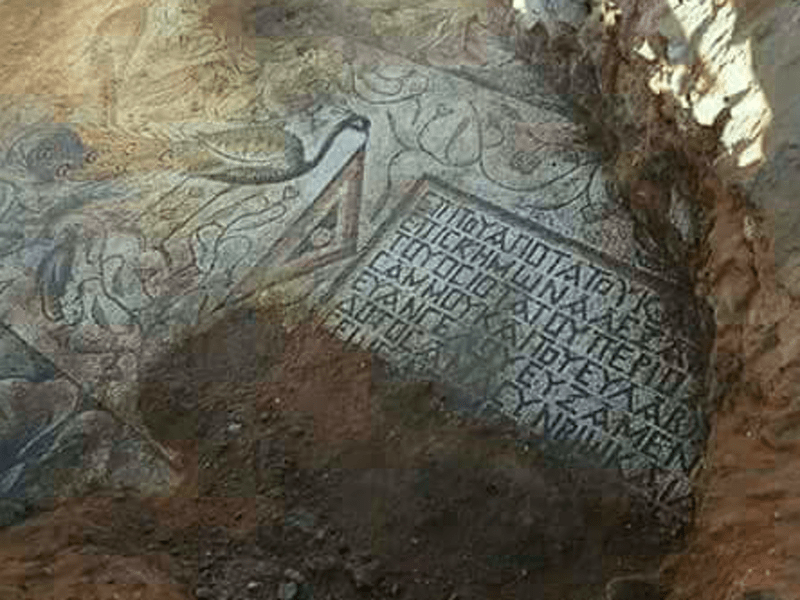During a routine mine excavation, the Syrian Engineering Corps found a unique-looking slab of material underneath the earth.
After some careful digging, they found an ancient Greek mosaic floor, which surprised all involved. Syrian authorities for archaeology were contacted urgently, and the process of professional excavation began.

The Syrian engineers were shocked that such pieces of human history had survived being in the countryside of Hama city, which faced heavy battles between the Syrian government and opposition forces.

Reports from Syrian media claim the discovery has spurred local authorities to establish greater communication lines with the archaeological administrations in the Syrian government. Syrian workers have briefly translated the floor pieces, which are being moved after excavations to archaeological laboratories to fully clean and translate them. Additional pieces will be investigated to get a full picture of the floor.
The structure has been estimated to have been in the area for several thousand years and has become very rigid on the earth.
Translations have begun on the structures and have revealed the connection to Saint Alexander and ‘the most respected bishop Evangelus’. Some of the initial information has led to the following Greek translation becoming available to the public:
ΕΠΙΤΟΥΑΓΙΟΥΚΑΙΕΠΙΣΚΗΜΩΝ ΑΛΕΞΑΝΔΡΟΥΤΟΥΟΣΙΟΤΑΤΟΥΠΕΡΙΚΑΜΜΟΥΚΑΙΤΟΥΕΥΛΑΒΕΣΤΑΤΟΥΕΥΑΝΓΕΛΛΟΥΕΥΞΑΜΕΝ
The reference to religious figures has pointed towards the possibility of the area being the site of a larger religious building, and as a result, it has become an archaeological site. The Syrian Army is continuing very careful work to de-mine the rest of the area to permit further investigations.
Byzantine-Era Monastery with Unique Greek Mosaic Discovered in Southern Israel

